
Grammarly Free User Onboarding Email Sequence (and what you can learn from it)
Do you have a lead onboarding strategy for when someone subscribes to your email list, or sign up for your free product/service?
No?
Frankly speaking, people leave their email addresses because they want you to email them. But if you’re not trying to do more with your onboarding emails, you’re ruining your best opportunity to nurture them!
Meet Grammarly.
Grammarly offers a premium writing assistant tool for anyone who wants to write online. They have a free version of the tool to acquire leads and convert many of them with a highly-effective onboarding email sequence.
Grammarly has significantly improved as a brand since 2008, and its simple yet effective (if not exemplary) onboarding email sequence has clearly played a vital role in the company’s growth.
Hence, we have decided to break down and analyze Grammarly’s free user onboarding email sequence. We are going to find out exactly how they do it and how you can implement it in your current email marketing automation.
Grammarly’s free user onboarding email sequence
Grammarly’s free user onboarding email sequence consists of four well-crafted emails to greet, nurture, and persuade a free user into buying their premium subscription. All of the emails are pretty long HTML formatted emails and consist of a wide range of data.
However, the best part about these emails is that everything is there for a reason. So we’ll break them into parts to help you better understand their objectives.
The welcome email (An introduction to Grammarly)
Subject line: “You + Grammarly = Ready for Action“
Grammarly’s first email triggers immediately after signing up for their free plan. This email is a classic example of introducing your brand and guiding your audience in using your web tool, especially if you’re selling a SaaS application.
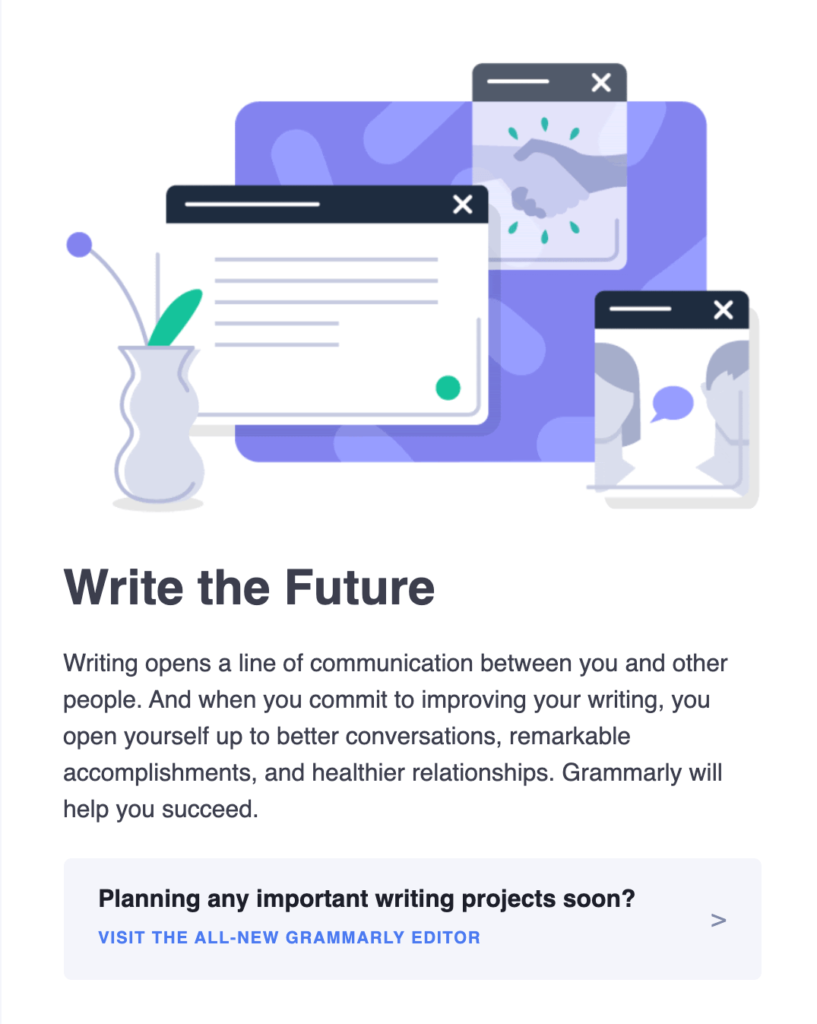
The email starts with an introduction to Grammarly and invites the user to try the tool right away. We like it because Grammarly focuses on the user’s pain point rather than simply giving a plain introduction. This makes the email much more relatable to the audience, and SaaS businesses can surely take inspiration from this part.

This part also introduces the user to some other tools Grammarly offers for smartphones, desktops, and MS Office. Introducing such tools ensures that the users wouldn’t have to use any other app for that purpose, and Grammarly will always be on top of their minds.
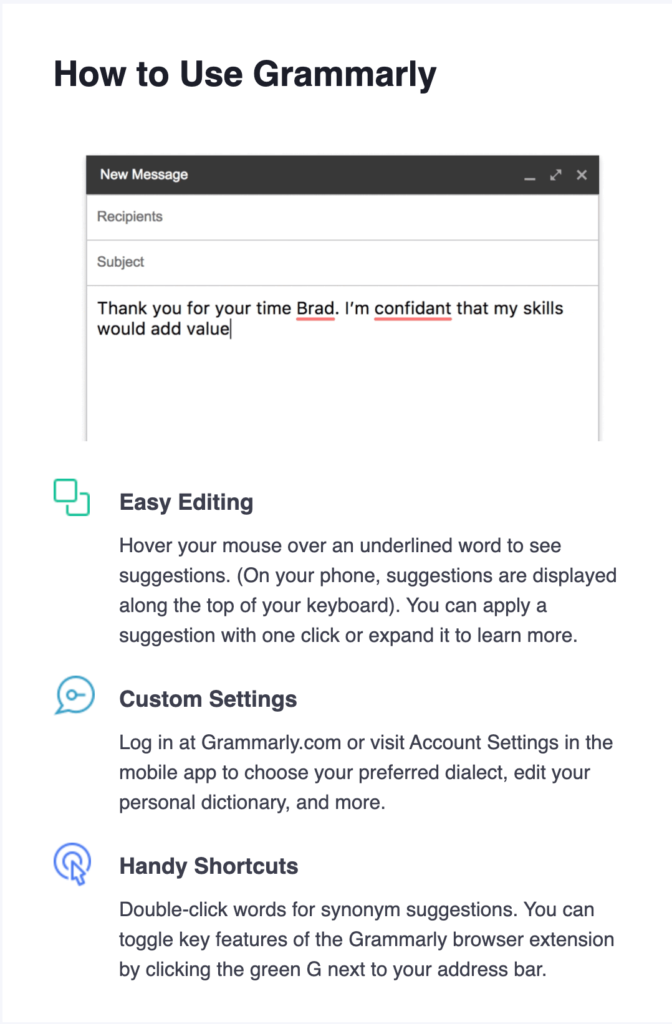
After introducing the user to the available tools comes the prominent part, where Grammarly provides a quick walkthrough for the users. This helps the users understand the tool and its features.
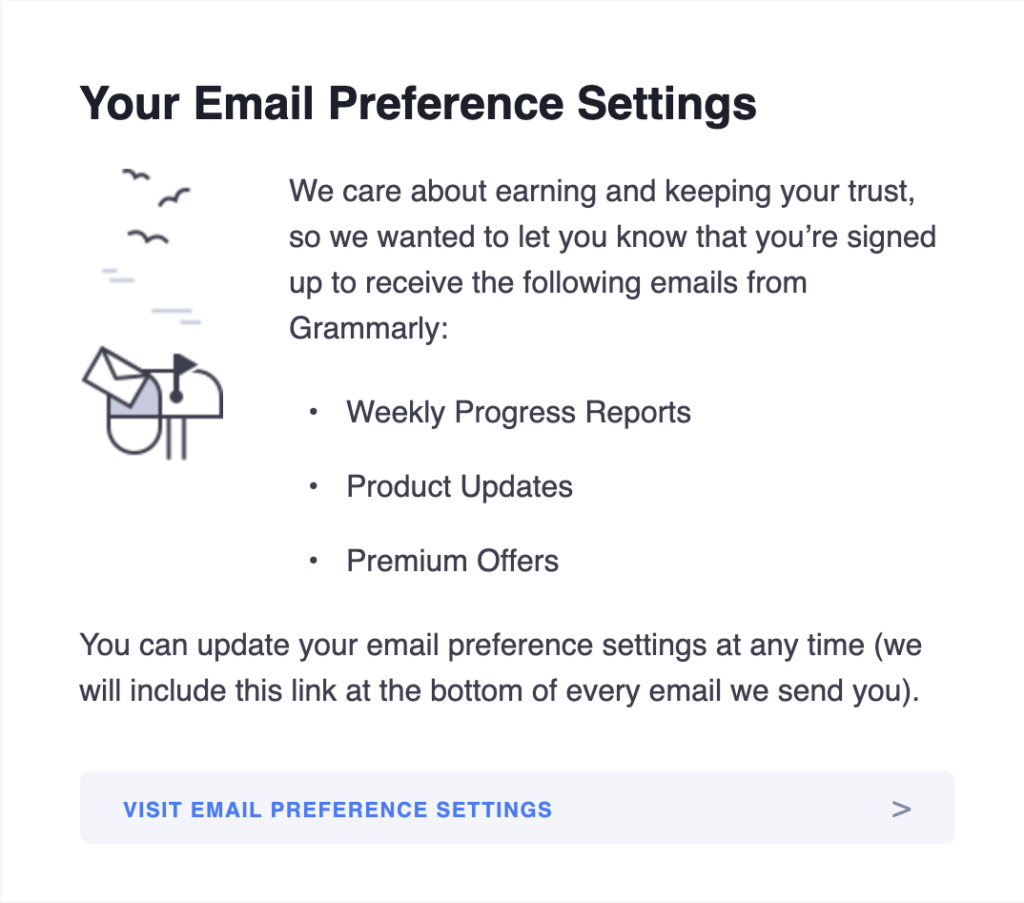
Encouraging users to edit email preferences in a welcome email? —Well, that’s how Grammarly builds trust!
Some users do not like to be in a marketing email loop, and there’s no point in sending marketing emails to those who don’t like receiving them. By allowing users to manage email preferences, Grammarly ensures higher future engagement and builds trust. This tactic is worth trying if you’re looking to ensure greater engagement with the audience.
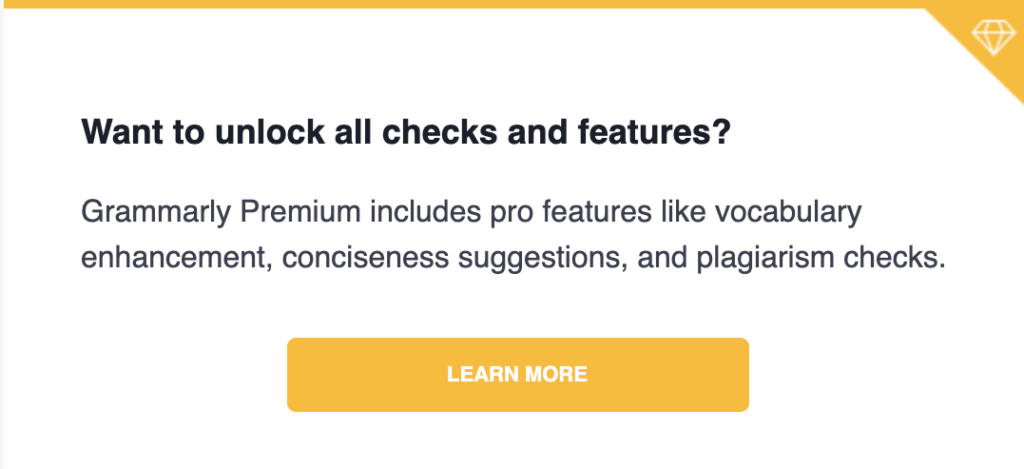
Finally, Grammarly concludes the email with a not-so-pushy CTA to buy their premium subscription. After all, you can’t expect someone to buy a SaaS product on his first interaction with your brand.
Second welcome email (Free features and product updates)
Subject line: “Get the Most Out of Your Free Account”
Grammarly sends another welcome email after the day the user signs up. Now this one is an expected email for a freemium product user.

The email consists of two parts where Grammarly tries to lure people into using their product on other platforms such as mobile phones, browsers, native apps, and desktops for free.
SaaS businesses often lose customers after the first interaction. But Grammarly makes the users stick to their service by sending an email to make the most out of their free service. Considering the high customer acquisition cost SaaS businesses may incur, this email indeed aligns with the objective of ensuring higher customer retention.
First sales email (an introduction to Grammarly premium)
Subject line: “What Exactly Is Grammarly Premium?”
For any SaaS business offering a free version product, the ultimate goal is to drive the user into buying their premium plan. Grammarly does the same and reaches out to the user with their first sales email five days after a new user signs up. This is a good approach because the user had a few days to try out their free version and probably started craving the premium version.
We can teardown their first sales email into three parts.

The first part is not too different from what most SaaS businesses do. Grammarly introduced its premium version and bulleted down the premium features.
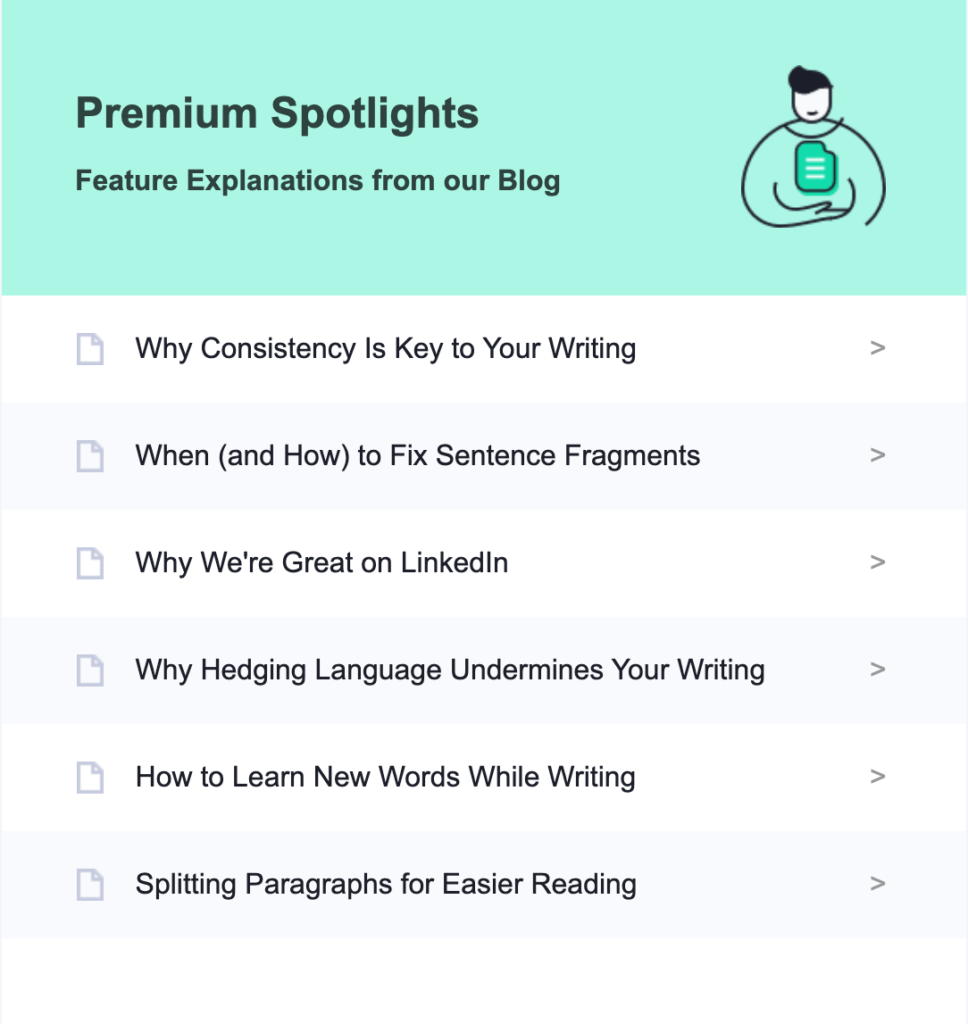
However, the inclusion of feature explanations and their top blog posts in the next part adds even more value to the audience.

As a result, their well-explained pricing plan and CTA make total sense for the audience and instantly trigger a purchase decision. This email is identical to a landing page and gives the audience an insight into the premium product. In addition, the premium spotlight section can act as an excellent sales booster because the audience will learn more from the shared content.
Second sales email (Discount on upgrade)
Subject line: “Write like a pro. Here’s a 40% off Grammarly Premium!”
The fourth sales email triggers seven days after a new user signs up.

Since it’s Grammarly’s last attempt in the welcome email sequence to lure people into buying a premium plan, they make an offer many won’t refuse. And to deal with the classic procrastinators, they introduced a limited-time discount to make the users act fast.

With an offer that’s hard to refuse, this FOMO tactic triggers customers’ decisions as soon as they open the email. By emphasizing what wasn’t included in the free version with a comparison table, Grammarly also makes users rethink their decision to pass on the discount.
Bonus: User retention email (tailored for inactive users)
Another email we loved from Grammarly is their user retention email. This triggers after two weeks of inactivity by a user. The email consists of three sections.
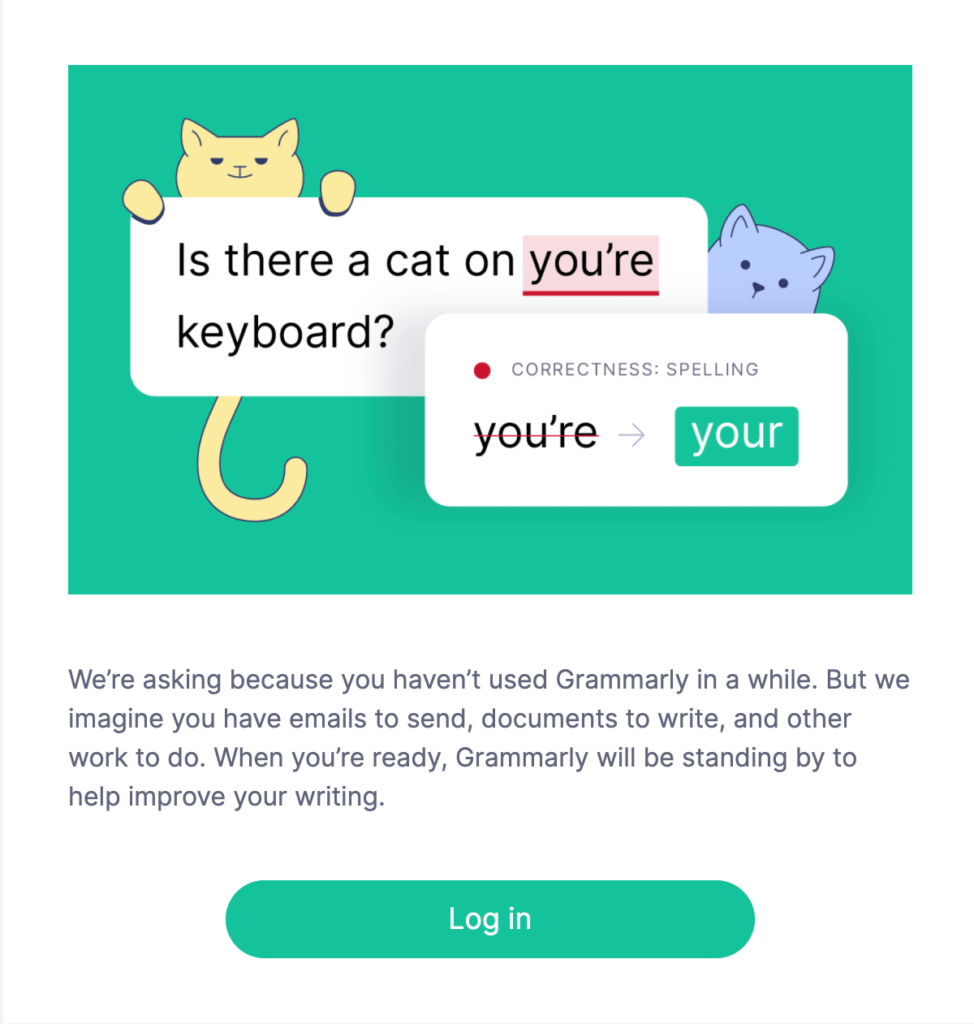
The first section is a friendly invitation to get back to Grammarly. This catches the audience’s attention with a non-invasive approach to bring back to Grammarly.
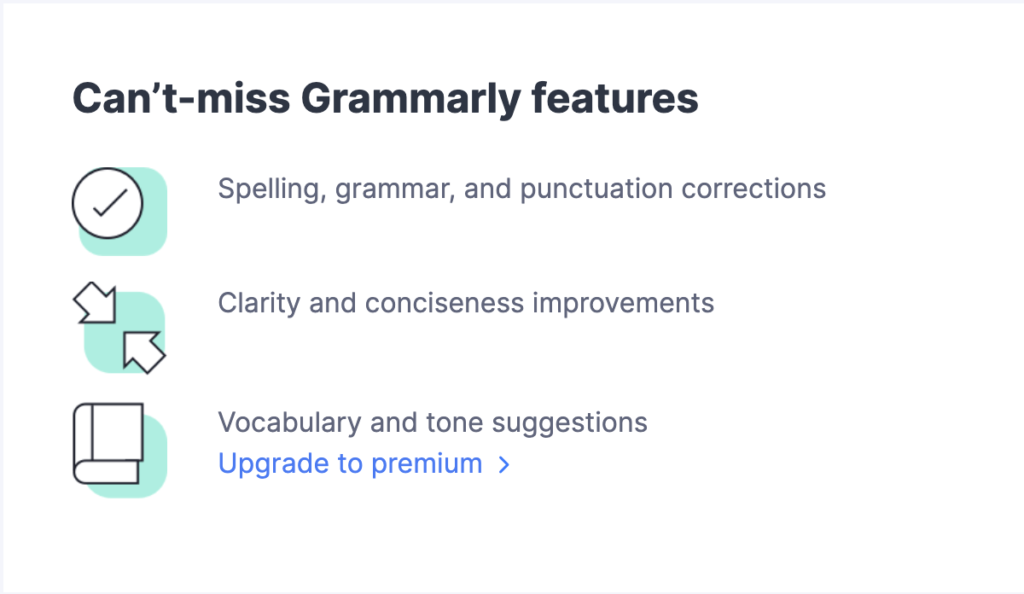
They have also highlighted the tool’s features to remind them of what they are missing, while the user also has the option to upgrade if they intended to do so.

If users are having trouble logging in, Grammarly also tells the user that they can reach them if they need help!
Lessons learned from Grammarly’s free user onboarding email sequence:
Grammarly focuses on increasing customer retention rather than customer acquisition through its email workflow. Their free user onboarding email sequence can be the role model for any SaaS businesses that want to get their leads converted to customers while lessening the possibility of customer churn.
Here’s what Grammarly’s free user onboarding email sequence teaches us:
Introduce your brand and educate the user
It’s essential to guide your user’s learning curve to help them use your product but don’t forget to introduce your brand and premium product to their subconscious. If you can, try to keep them engaged with your brand by offering other items that they can use. To build trust, you can also allow them to manage their email preference.
Guide the user with the free version and keep them engaged
If you have a free product, don’t forget to let the user know what they can do, even in the free version. This significantly increases the user’s trust as they’ll understand you care about your free subscribers just as you care about your paying customers. Again, you should encourage users to stay engaged with your business by using other products they can access for free.
Don’t keep the user hanging, offer premium!
Once your free users had a taste of your free product, don’t leave them hanging. Offer your premium service at the right time. Instead of details, you can create a landing page environment to keep the email to the point and add relevant links to help the users find out the details.
Try offering a discount
Perhaps a discount can trigger your users’ buying decision if the sale’s drip didn’t work, but don’t let the online procrastinators misuse the opportunity by introducing a FOMO deal. Also, clarifying what isn’t included in the free version of your product can impact your user’s decision.
User retention is crucial
Customer acquisition costs are generally higher than customer retention. So you should design one or two customer retention emails and make your customer’s return path smoother.
Try Our Free Marketing Automation Plugin for WordPress!

Send onboarding emails like a pro!
One thing we didn’t mention is the tone Grammarly used in all of these emails. They were concise and used the right words to get the newcomers on board without being pushy.
Any business can succeed with this approach because customers want brands to create relationships without pushing them to purchase. And with these emails, Grammarly did that really well while consciously offering their premium product.
Thus, you can take inspiration from these emails to build relationships, promote your products, and maintain higher customer retention. With that said, we wish you all the best in setting up your welcome email sequence.



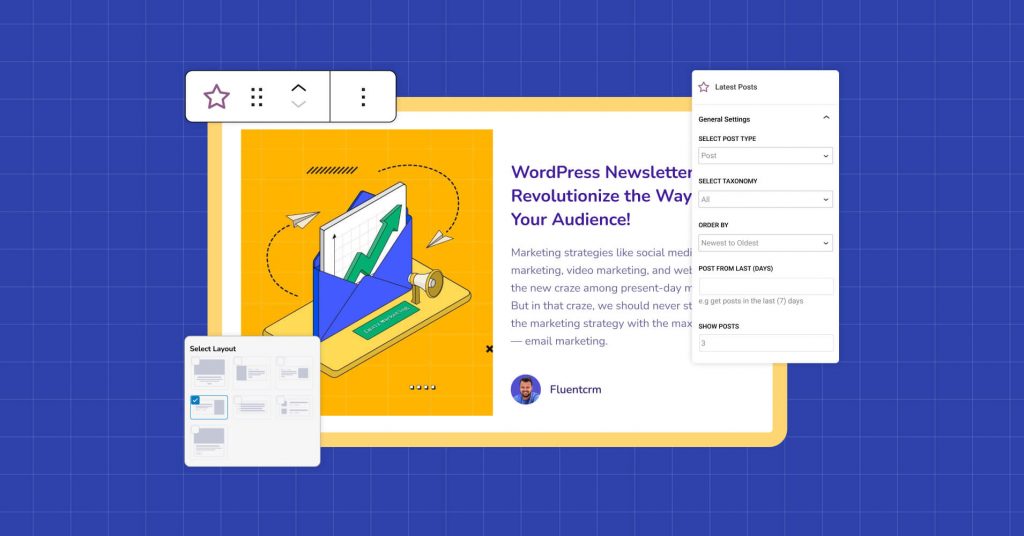
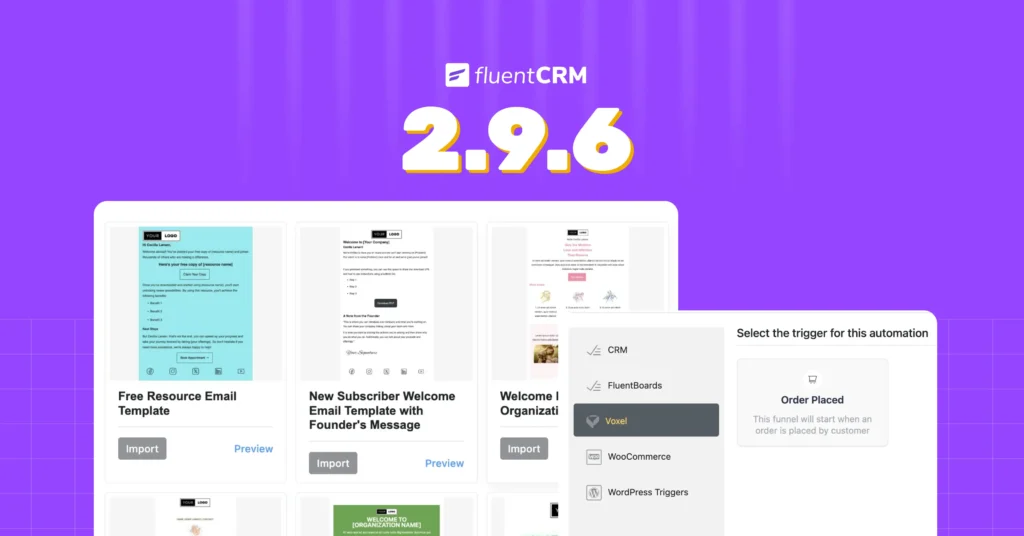




Leave a Reply